Description
History About the 5.56x45MM

The 7.62×51mm NATO and 5.56×45mm NATO cartridges compared to an AA battery
In 1954, the larger 7.62×51mm NATO rifle cartridge was selected as the first standard NATO rifle cartridge. At the time of selection there had been criticism that the recoil power of the 7.62×51mm NATO, when fired from a hand-held lightweight modern service rifle, did not allow a sufficient automatic rate of fire for modern combat.
The British had extensive evidence through their own experimentation with intermediate cartridges since 1945 and were on the point of adopting a .280-inch (7 mm) cartridge when the selection of the 7.62×51mm NATO was made. The FN company had also been involved in the development of the .280 round, including developing a version of the FN FAL in .280 The concerns about recoil and effectiveness were effectively overruled by the US within NATO, and the other NATO nations accepted that standardization was more important at the time than selection of the ideal cartridge

Service rifle cartridge cases: (left to right) 7.62×54mmR, 7.62×51mm NATO, 7.62×39mm, 5.56×45mm NATO, 5.45×39mm
The development of the cartridge that eventually became the .223 Remington (from which 5.56mm NATO would eventually be developed) would be intrinsically linked to the development of a new lightweight combat rifle. The cartridge and rifle were developed as one unit by Fairchild Industries, Remington Arms, and several engineers working toward a goal developed by U.S. Continental Army Command (CONARC). Early development work began in 1957. A project to create a small-calibre, high-velocity (SCHV) firearm was created. Eugene Stoner of Armalite was invited to scale down the AR-10 (7.62mm) design. Winchester was also invited to participate. The parameters that were requested by CONARC:
- .22 caliber
- Bullet exceeding supersonic speed at 500 yards
- Rifle weight of 6 lbs
- Magazine capacity of 20 rounds
- Select fire for both semi-automatic and fully automatic use
- Penetration of US steel helmet through one side at 500 yards
- Penetration of .135-inch steel plate at 500 yards
- Accuracy and ballistics equal to M2 ball ammunition (.30-06 Springfield) out to 500 yards
- Wounding ability equal to M1 carbine
Performance
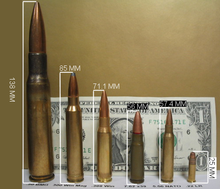
5.56mm NATO shown alongside other cartridges and a United States $1 bill
The 5.56×45mm NATO SS109/M855 cartridge (NATO: SS109; U.S.: M855) with standard 62 gr. lead core bullets with steel penetrator will penetrate about 38 to 51 cm (15 to 20 in) into soft tissue in ideal circumstances. As with all spitzer shaped projectiles, it is prone to yaw in soft tissue. However, at impact velocities above roughly 762 m/s (2,500 ft/s), it may yaw and then fragment at the cannelure (the crimping groove around the cylinder of the bullet)] These fragments can disperse through flesh and bone, inflicting additional internal injuries.
Fragmentation, if and when it occurs, imparts much greater damage to human tissue than bullet dimensions and velocities would suggest. This fragmentation effect is highly dependent on velocity, and therefore barrel length: short-barreled carbines generate less muzzle velocity and therefore lose wounding effectiveness at much shorter ranges than longer-barreled rifles.
Proponents of the hydrostatic shock theory contend that the shockwave from a high-velocity bullet results in wounding effects beyond the tissue directly crushed and torn by the bullet and fragments. However, others argue that tissue damage from hydrostatic shock is a myth. Critics argue that sonic pressure waves do not cause tissue disruption and that temporary cavity formation is the actual cause of tissue disruption mistakenly attributed to sonic pressure waves.
SS109/M855 NATO ball can penetrate up to 3 mm (0.12 in) of steel at 600 meters According to Nammo, a Finnish-Norwegian ammunition producer, the 5.56×45mm NATO M995 armour piercing cartridge can penetrate up to 12 mm (0.47 in) of RHA steel at 100 meters.
The US Army’s Ballistic Research Laboratory measured a ballistic coefficient (G7 BC) of 0.151 and form factor (G7 i) of 1.172 for the SS109/M855 ball projectile.
The Swedish military has measured the bullet velocities of SS109/M855 military cartridges at 4 m (13.1 ft) from the muzzle fired from differing barrel lengths.
| Barrel length | SS109/M855 V4 bullet velocity | V4 velocity loss |
|---|---|---|
| 210 mm (8.3 in) | 723 m/s (2,372 ft/s) | 41 m/s (135 ft/s) |
| 240 mm (9.4 in) | 764 m/s (2,507 ft/s) | 32 m/s (105 ft/s) |
| 270 mm (10.6 in) | 796 m/s (2,612 ft/s) | 29 m/s (95 ft/s) |
| 300 mm (11.8 in) | 825 m/s (2,707 ft/s) | 18 m/s (59 ft/s) |
| 330 mm (13.0 in) | 843 m/s (2,766 ft/s) | 23 m/s (75 ft/s) |
| 360 mm (14.2 in) | 866 m/s (2,841 ft/s) | 12 m/s (39 ft/s) |
| 390 mm (15.4 in) | 878 m/s (2,881 ft/s) | 14 m/s (46 ft/s) |
| 420 mm (16.5 in) | 892 m/s (2,927 ft/s) | 14 m/s (46 ft/s) |
| 450 mm (17.7 in) | 906 m/s (2,972 ft/s) | 9 m/s (30 ft/s) |
| 480 mm (18.9 in) | 915 m/s (3,002 ft/s) | 7 m/s (23 ft/s) |
| 508 mm (20.0 in) | 922 m/s (3,025 ft/s) | – |

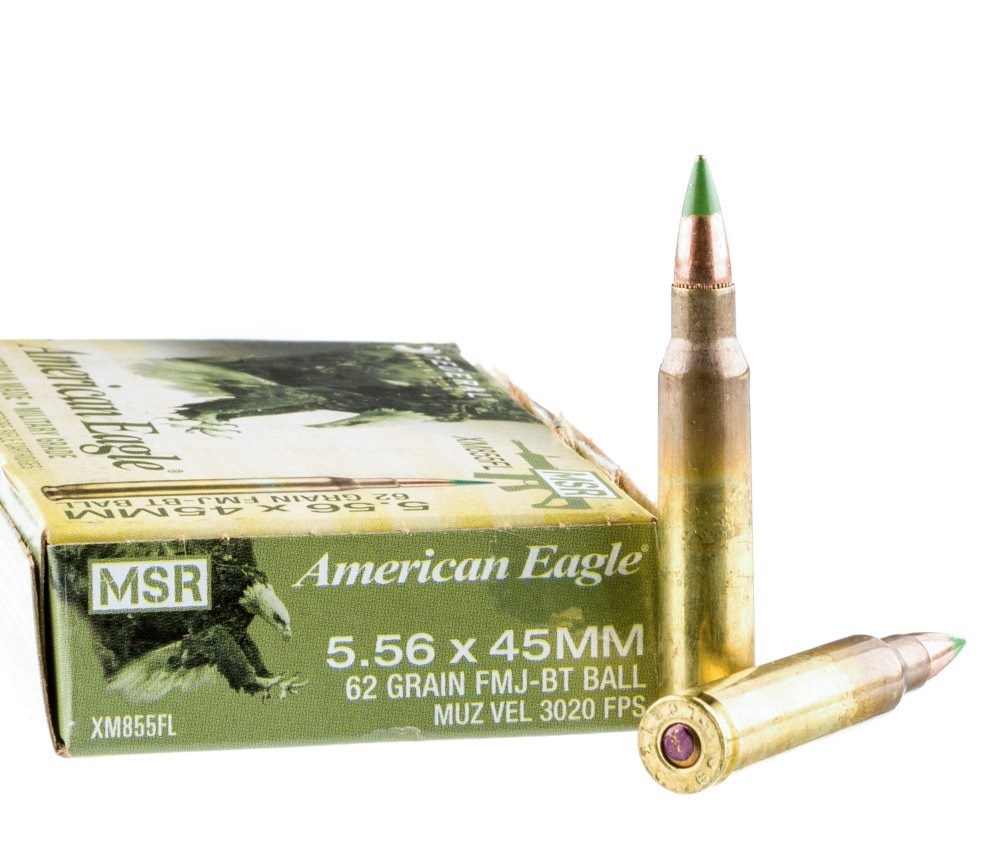
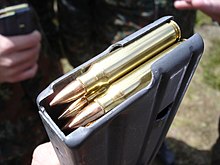
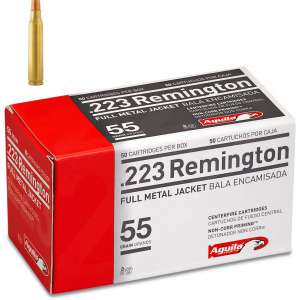
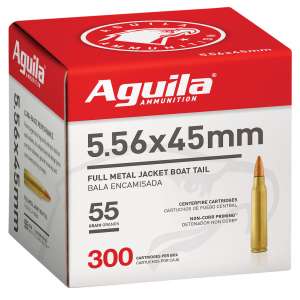
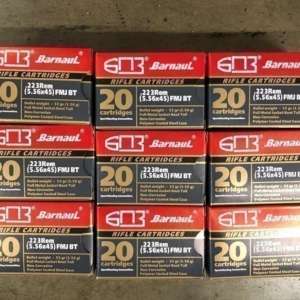
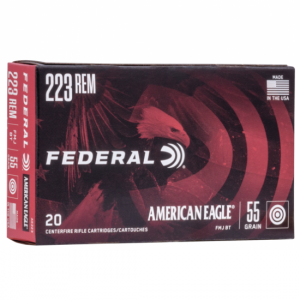
Reviews
There are no reviews yet.